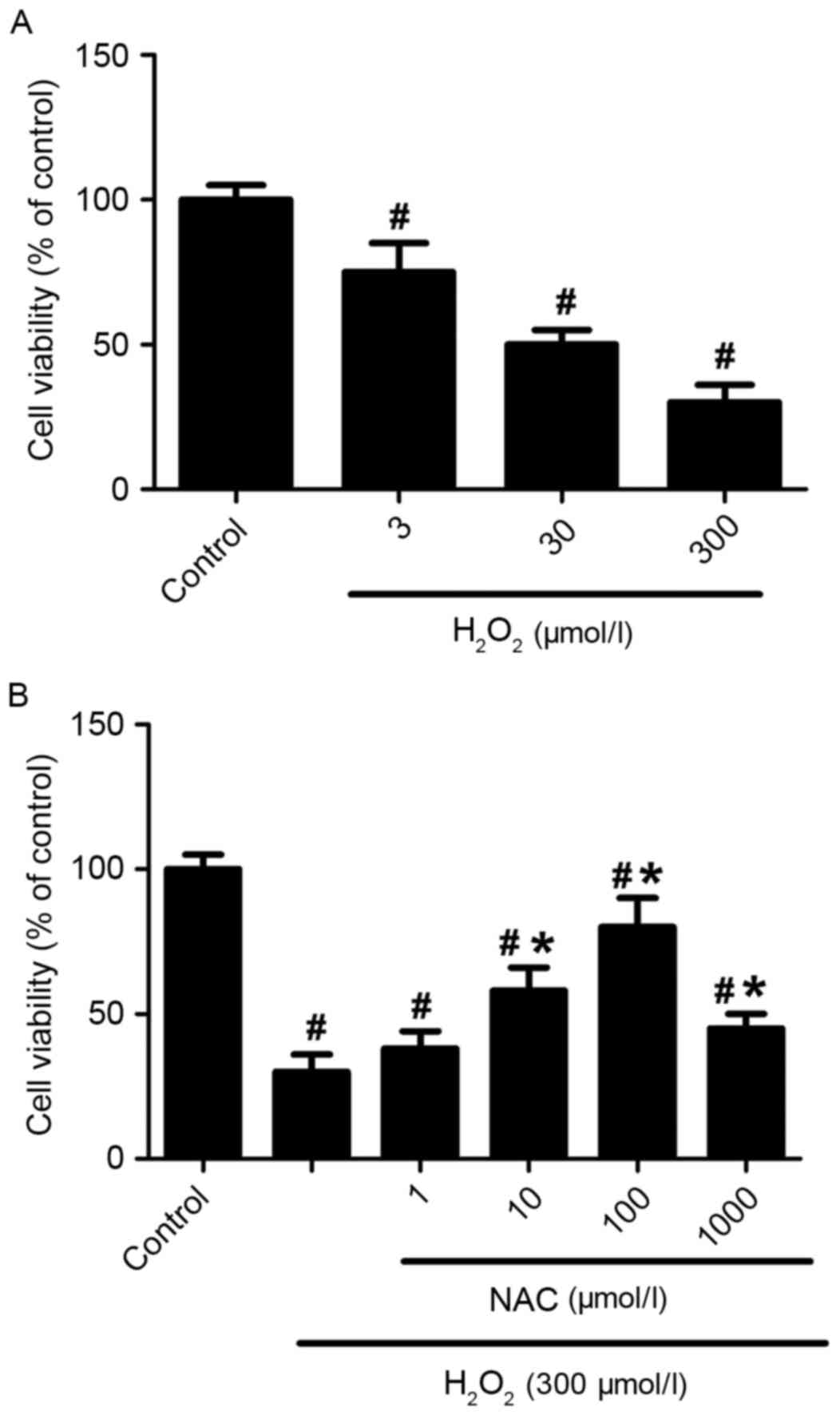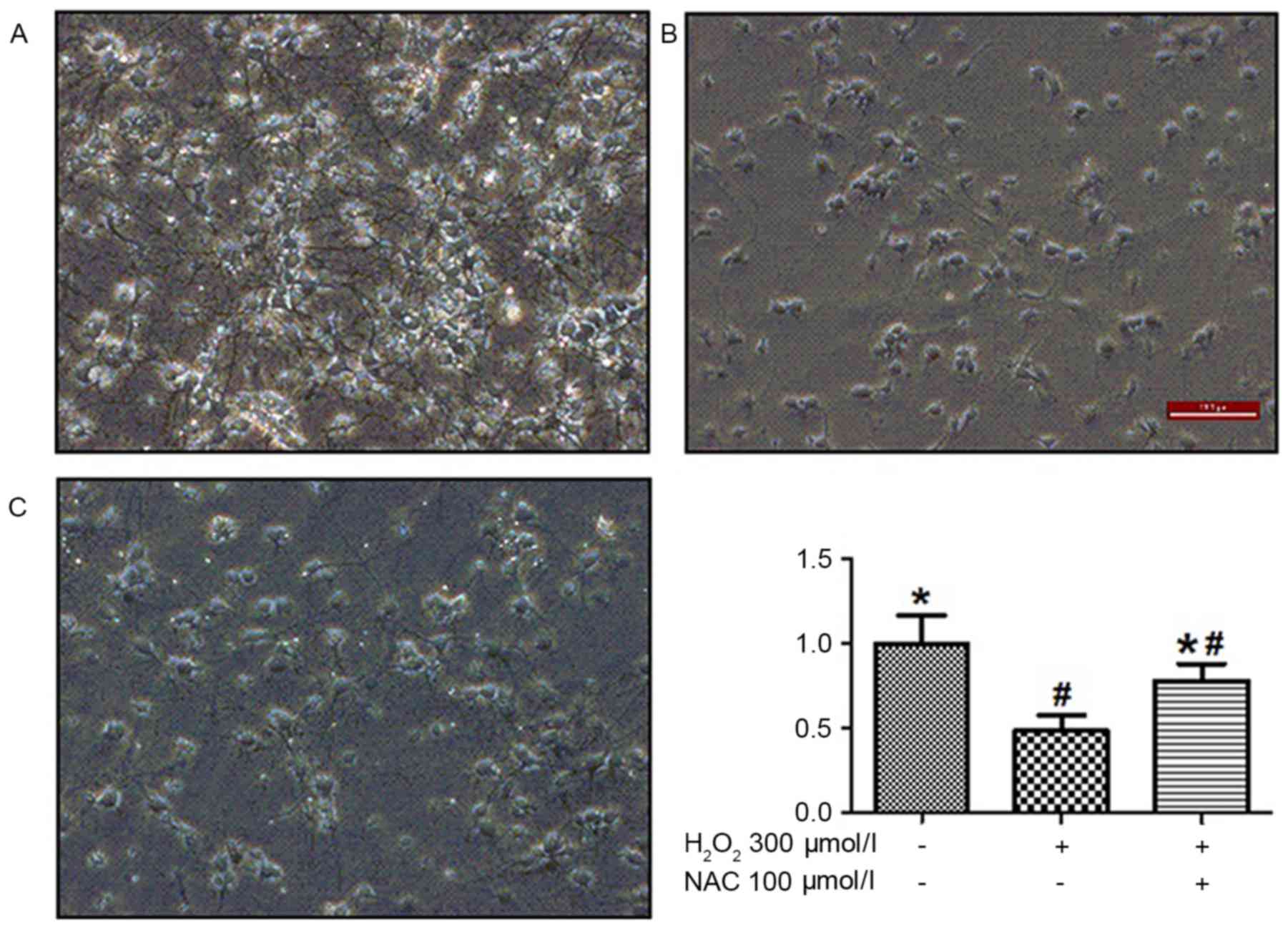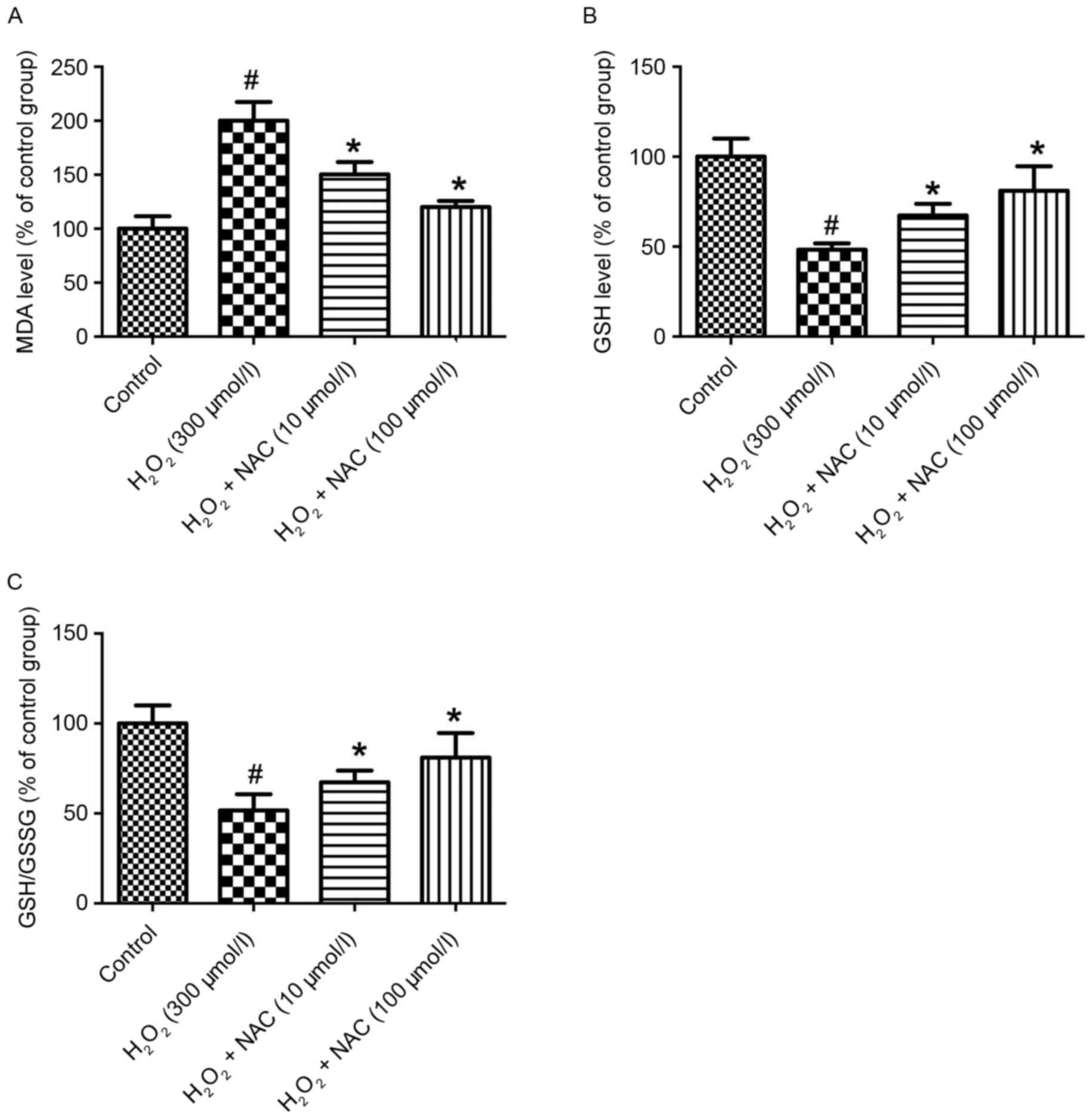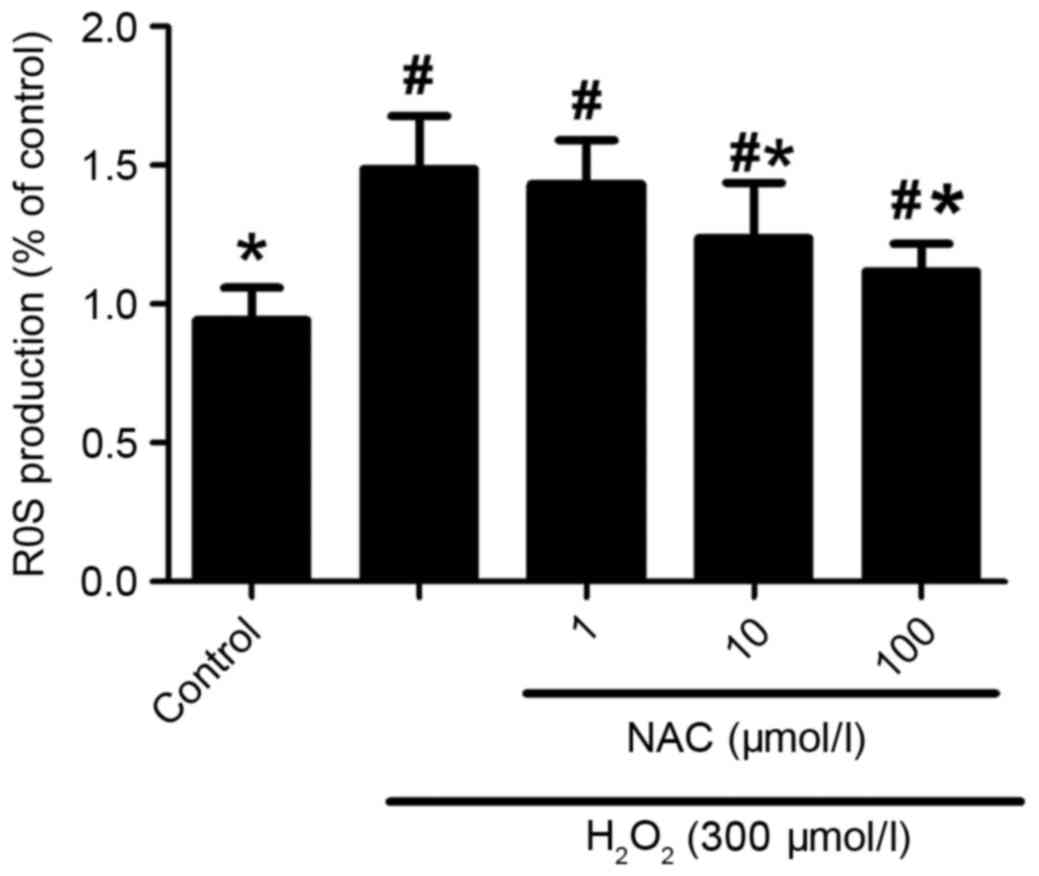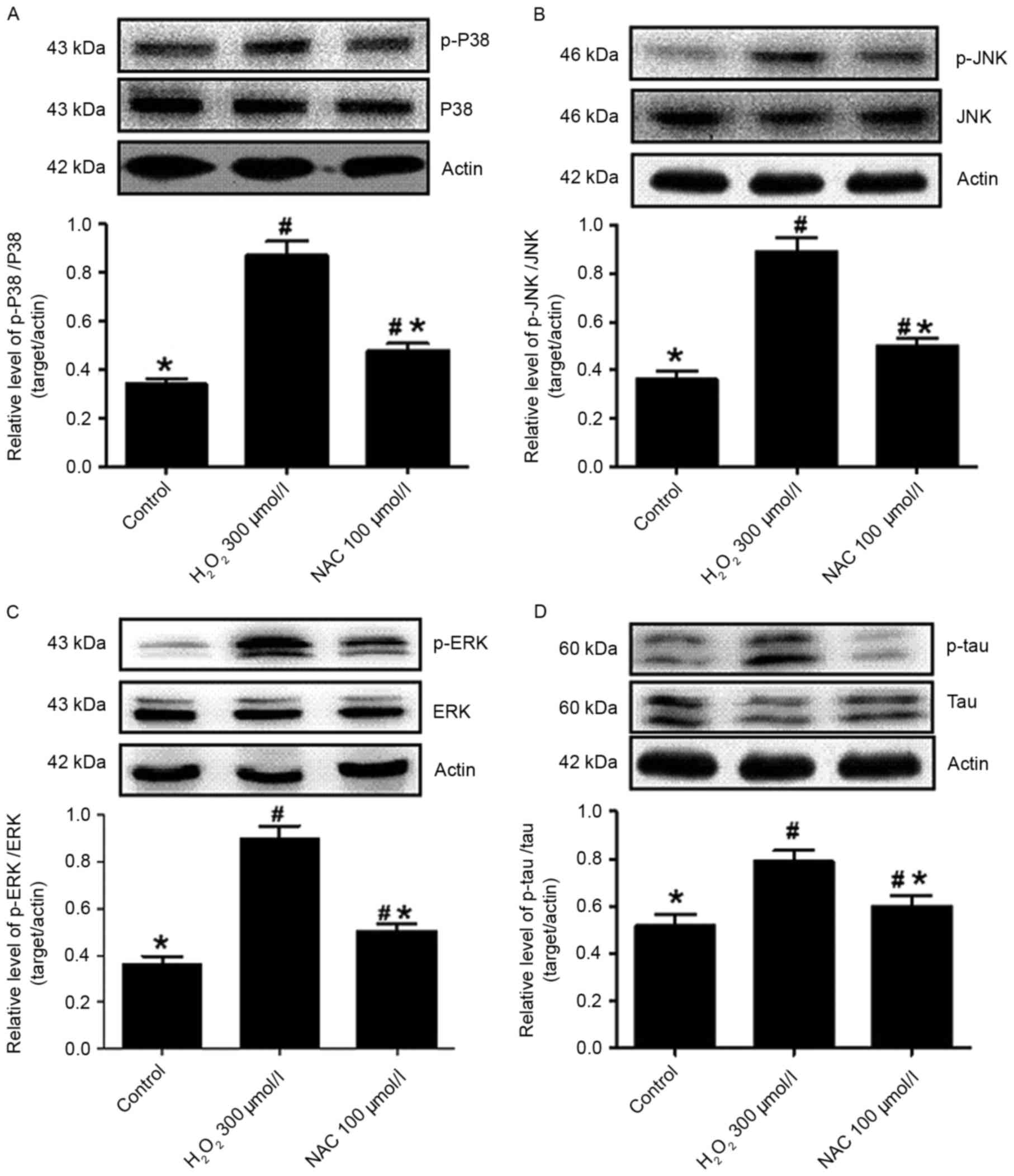|
1
|
Giacobini E and Gold G: Alzheimer disease
therapy-moving from amyloid-β to tau. Nat Rev Neurol. 9:677–686.
2013. View Article : Google Scholar : PubMed/NCBI
|
|
2
|
Steel K: Alzheimer's disease. N Engl J
Med. 362:1844–1845. 2010. View Article : Google Scholar : PubMed/NCBI
|
|
3
|
Schneider LS, Dagerman KS, Higgins JP and
McShane R: Lack of evidence for the efficacy of memantine in mild
Alzheimer disease. Arch Neurol. 68:991–998. 2011. View Article : Google Scholar : PubMed/NCBI
|
|
4
|
Lang AE: Clinical trials of
disease-modifying therapies for neurodegenerative diseases: The
challenges and the future. Nat Med. 16:1223–1226. 2010. View Article : Google Scholar : PubMed/NCBI
|
|
5
|
Pimplikar SW: Reassessing the amyloid
cascade hypothesis of Alzheimer's disease. Int J Biochem Cell Biol.
41:1261–1268. 2009. View Article : Google Scholar : PubMed/NCBI
|
|
6
|
Butterfield DA, Swomley AM and Sultana R:
Amyloid β-peptide (1–42)-induced oxidative stress in Alzheimer
disease: Importance in disease pathogenesis and progression.
Antioxid Redox Signal. 19:823–835. 2013. View Article : Google Scholar : PubMed/NCBI
|
|
7
|
Tavakkoli M, Miri R, Jassbi AR, Erfani N,
Asadollahi M, Ghasemi M, Saso L and Firuzi O: Carthamus, Salvia and
Stachys species protect neuronal cells against oxidative
stress-induced apoptosis. Pharm Biol. 52:1550–1557. 2014.
View Article : Google Scholar : PubMed/NCBI
|
|
8
|
Ando K, Uemura K, Kuzuya A, Maesako M,
Asada-Utsugi M, Kubota M, Aoyagi N, Yoshioka K, Okawa K, Inoue H,
et al: N-cadherin regulates p38 MAPK signaling via association with
JNK-associated leucine zipper protein: Implications for
neurodegeneration in Alzheimer disease. J Biol Chem. 286:7619–7628.
2011. View Article : Google Scholar : PubMed/NCBI
|
|
9
|
Savage MJ, Lin YG, Ciallella JR, Flood DG
and Scott RW: Activation of c-Jun N-terminal kinase and p38 in an
Alzheimer's disease model is associated with amyloid deposition. J
Neurosci. 22:3376–3385. 2002.PubMed/NCBI
|
|
10
|
Ferrer I, Gomez-Isla T, Puig B, Freixes M,
Ribé E, Dalfó E and Avila J: Current advances on different kinases
involved in tau phosphorylation, and implications in Alzheimer's
disease and tauopathies. Curr Alzheimer Res. 2:3–18. 2005.
View Article : Google Scholar : PubMed/NCBI
|
|
11
|
Unnithan AS, Jiang Y, Rumble JL, Pulugulla
SH, Posimo JM, Gleixner AM and Leak RK: N-acetyl cysteine prevents
synergistic, severe toxicity from two hits of oxidative stress.
Neurosci Lett. 560:71–76. 2014. View Article : Google Scholar : PubMed/NCBI
|
|
12
|
Vedunova MV, Mitroshina EV, Sakharnova TA,
Bobrov MY, Bezuglov VV, Khaspekov LG and Mukhina IV: Effect of
N-arachidonoyl dopamine on activity of neuronal network in primary
hippocampus culture upon hypoxia modelling. Bull Exp Biol Med.
156:461–464. 2014. View Article : Google Scholar : PubMed/NCBI
|
|
13
|
Garrido J, Gaspar A, Garrido EM, Miri R,
Tavakkoli M, Pourali S, Saso L, Borges F and Firuzi O: Alkyl esters
of hydroxycinnamic acids with improved antioxidant activity and
lipophilicity protect PC12 cells against oxidative stress.
Biochimie. 94:961–967. 2012. View Article : Google Scholar : PubMed/NCBI
|
|
14
|
Yu Y, Wang JR, Sun PH, Guo Y, Zhang ZJ,
Jin GZ and Zhen X: Neuroprotective effects of atypical D1 receptor
agonist SKF83959 are mediated via D1 receptor-dependent inhibition
of glycogen synthase kinase-3 beta and a receptor-independent
anti-oxidative action. J Neurochem. 104:946–956. 2008. View Article : Google Scholar : PubMed/NCBI
|
|
15
|
Mihara M and Uchiyama M: Determination of
malonaldehyde precursor in tissues by thiobarbituric acid test.
Anal Biochem. 86:271–278. 1978. View Article : Google Scholar : PubMed/NCBI
|
|
16
|
Bass DA, Parce JW, Dechatelet LR, Szejda
P, Seeds MC and Thomas M: Flow cytometric studies of oxidative
product formation by neutrophils: A graded response to membrane
stimulation. J Immunol. 130:1910–1917. 1983.PubMed/NCBI
|
|
17
|
Melo A, Monteiro L, Lima RM, Oliveira DM,
Cerqueira MD and El-Bachá RS: Oxidative stress in neurodegenerative
diseases: Mechanisms and therapeutic perspectives. Oxid Med Cell
Longev. 2011:4671802011. View Article : Google Scholar : PubMed/NCBI
|
|
18
|
Dumont M and Beal MF: Neuroprotective
strategies involving ROS in Alzheimer disease. Free Radic Biol Med.
51:1014–1026. 2011. View Article : Google Scholar : PubMed/NCBI
|
|
19
|
Raman M, Chen W and Cobb MH: Differential
regulation and properties of MAPKs. Oncogene. 26:3100–3112. 2007.
View Article : Google Scholar : PubMed/NCBI
|
|
20
|
Marques CA, Keil U, Bonert A, Steiner B,
Haass C, Muller WE and Eckert A: Neurotoxic mechanisms caused by
the Alzheimer's disease-linked Swedish amyloid precursor protein
mutation: Oxidative stress, caspases, and the JNK pathway. J Biol
Chem. 278:28294–28302. 2003. View Article : Google Scholar : PubMed/NCBI
|
|
21
|
Shen C, Chen Y, Liu H, Zhang K, Zhang T,
Lin A and Jing N: Hydrogen peroxide promotes Abeta production
through JNK-dependent activation of gamma-secretase. J Biol Chem.
283:17721–17730. 2008. View Article : Google Scholar : PubMed/NCBI
|
|
22
|
Tamagno E, Guglielmotto M, Giliberto L,
Vitali A, Borghi R, Autelli R, Danni O and Tabaton M: JNK and
ERK1/2 pathways have a dual opposite effect on the expression of
BACE1. Neurobiol Aging. 30:1563–1573. 2009. View Article : Google Scholar : PubMed/NCBI
|
|
23
|
Sawe N, Steinberg G and Zhao H: Dual roles
of the MAPK/ERK1/2 cell signaling pathway after stroke. J Neurosci
Res. 86:1659–1669. 2008. View Article : Google Scholar : PubMed/NCBI
|
|
24
|
Takei Y, Teng J, Harada A and Hirokawa N:
Defects in axonal elongation and neuronal migration in mice with
disrupted tau and map1b genes. J Cell Biol. 150:989–1000. 2000.
View Article : Google Scholar : PubMed/NCBI
|
|
25
|
Alonso AC, Zaidi T, Grundke-Iqbal I and
Iqbal K: Role of abnormally phosphorylated tau in the breakdown of
microtubules in Alzheimer disease. Proc Natl Acad Sci USA. 91:pp.
5562–5566. 1994; View Article : Google Scholar : PubMed/NCBI
|
|
26
|
Munoz AM, Rey P, Soto-Otero R, Guerra MJ
and Labandeira-Garcia JL: Systemic administration of
N-acetylcysteine protects dopaminergic neurons against
6-hydroxydopamine-induced degeneration. J Neurosci Res. 76:551–562.
2004. View Article : Google Scholar : PubMed/NCBI
|
|
27
|
Hart AM, Terenghi G, Kellerth JO and
Wiberg M: Sensory neuroprotection, mitochondrial preservation, and
therapeutic potential of N-acetyl-cysteine after nerve injury.
Neuroscience. 125:91–101. 2004. View Article : Google Scholar : PubMed/NCBI
|
|
28
|
Adair JC, Knoefel JE and Morgan N:
Controlled trial of N-acetylcysteine for patients with probable
Alzheimer's disease. Neurology. 57:1515–1517. 2001. View Article : Google Scholar : PubMed/NCBI
|



